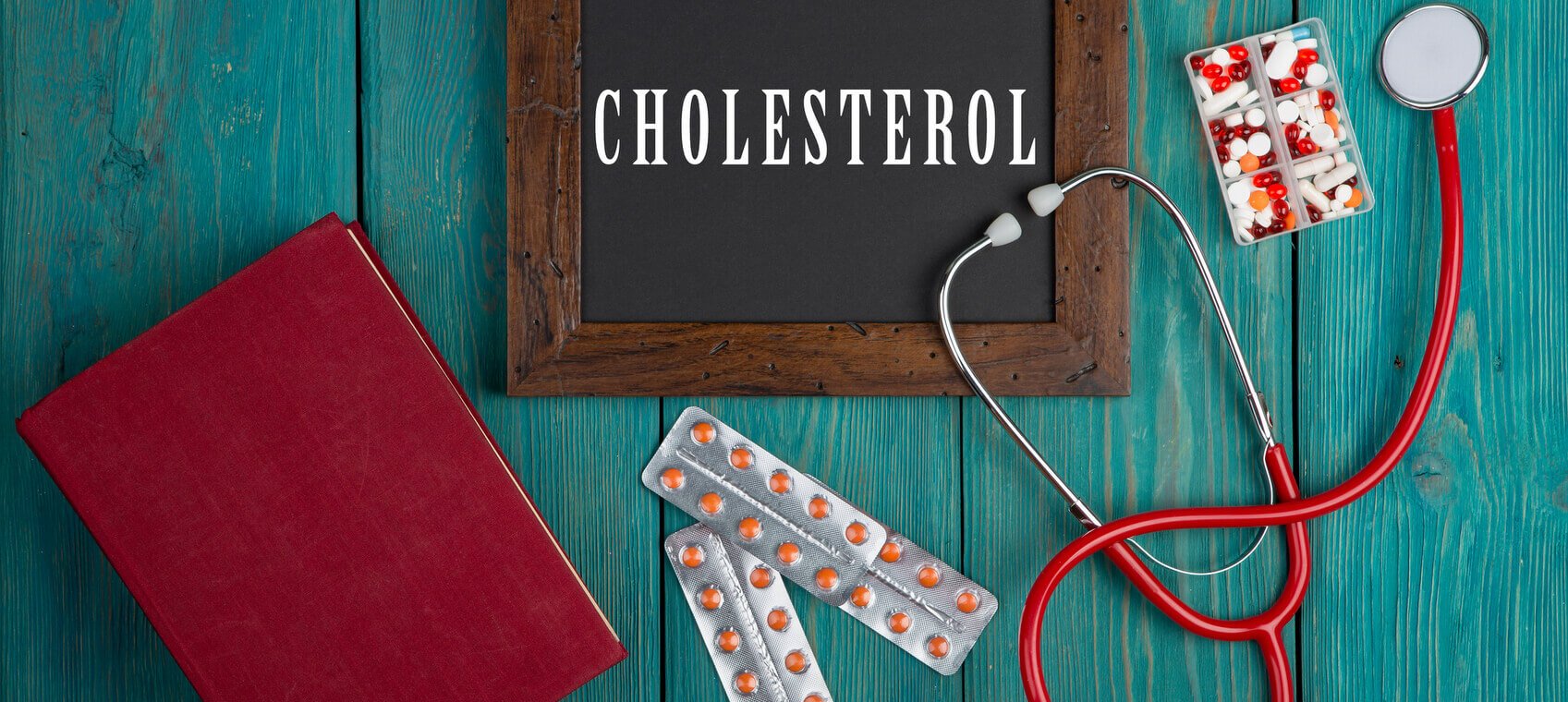
When it comes to heart health, many people (doctors included) are still focusing on cholesterol numbers. But the truth is cholesterol is not the cause of heart disease. In fact, half of all people who die of a heart attack have normal cholesterol levels. Plus, half of all people with high cholesterol don’t have heart disease.
Does that mean you can ignore your cholesterol? Absolutely not. But you don’t want to look at your total cholesterol, or your HDL-LDL cholesterol ratio. Those are antiquated ways of looking at cholesterol. Instead, you want to focus on the numbers many doctors miss.
What is Cholesterol?
Cholesterol is a fat-like, waxy substance that occurs naturally in every part of your body. The reason why cholesterol is important is because it helps to:
- Construct the semi-permeable membranes around each of the 100 trillion cells in the body
- Produce estrogen, testosterone, and adrenal hormones
- Make vitamin D
- Prompt your metabolism to work efficiently
- Support your immune system
- Facilitate cell communication and memory in the brain
- Repair damage that occurs within the cardiovascular system
There are two main types of cholesterol: low-density lipoprotein (LDL) and high-density lipoprotein (HDL). It’s common to hear generalizations that LDL is the “bad” cholesterol and HDL is the “good” cholesterol, but that’s not quite accurate. Both HDL and LDL cholesterol are far more complex than these simple labels imply.
What Is HDL Cholesterol: Why It’s Not Always “Good”
What is HDL cholesterol? As the name suggests, HDL cholesterol is a high-density lipoprotein with a cholesterol center. It’s is often referred to as the “good” cholesterol because it does two important things to prevent heart disease.
HDL cholesterol travels through your bloodstream removing cholesterol from where it doesn’t belong—meaning it removes the “sticky” LDL cholesterol that can clog your arteries. HDL cholesterol also helps to keep your blood vessels healthy by continually repairing the endothelium, the inner lining of your blood vessels.
In addition, there’s research to suggest that having normal HDL cholesterol levels can help you to avoid Alzheimer’s disease.
What is the HDL cholesterol optimal range? The HDL cholesterol optimal range is 40–65 mg/dL for women; 35–65 mg/dL for men.
How to Increase LOW HDL Cholesterol
If you’re wondering how to raise low HDL cholesterol, the good news is there are several ways you can increase it.
- Lose Weight: If you’re overweight, losing weight is a powerful tool for how to raise HDL cholesterol. To shed unwanted pounds, avoid processed foods and foods high in sugar and trans fats. Instead, I recommend eating a Pan Asian Modified Mediterranean (PAMM) Diet.
- Get Regular Physical Exercise: Strive for 30–60 minutes of aerobic activity three to five days a week to increase your HDL cholesterol. I recommend dancing or walking as fun ways to get moving.
- Take Citrus Bergamot: One of the top citrus bergamot benefits is raising HDL cholesterol. In a double-blind, placebo control study those taking Bergamonte®, a patented bergamot extract from Italy, experienced a 22% increase in HDL cholesterol.
- Eat Extra Virgin Olive Oil: One of the most delicious solutions for how to increase HDL cholesterol is to put more olive oil in your diet. In a study, those who ate two tablespoons daily of a high polyphenol olive oil, such as extra virgin olive oil, experienced the most significant increases in HDL cholesterol levels.
- Take Niacin (Vitamin B3): One of the top benefits of niacin is helping to increase HDL cholesterol. Studies show niacin can increase HDL cholesterol by 30%. What is the best niacin dosage? Since it can cause flushing, my recommendation is that you get the benefits of niacin starting with 250 mg of niacin three times daily. Then, slowly work up to 1–2 grams in divided doses three times a day.
- Don’t Smoke: One of the many ways smoking damages your health is by suppressing HDL cholesterol levels. So, if you’re wondering how to increase HDL cholesterol, stop smoking.
- Drink Red Wine in Moderation: Red wine contains resveratrol, a phytonutrient with cardio-protective benefits and it helps to raise HDL cholesterol. But I recommend no more than one glass a day, or every other day.
How to Lower HIGH HDL Cholesterol
Because HDL cholesterol is so beneficial, many people automatically think the higher their HDL cholesterol is the better. But the fact is that exceptionally high HDL cholesterol can be just as dangerous as low HDL cholesterol.
For both men and women, the HDL cholesterol normal range is up to 65 mg/dL. Levels of HDL cholesterol much higher than that may signal that you have dysfunctional cholesterol. Instead of helping to clear plaque from your arteries, dysfunctional HDL cholesterol can be pro-inflammatory, increasing inflammation in your blood vessels.
If your HDL cholesterol is too high, you want to get your HDL cholesterol fractions tested. There are two main types of HDL cholesterol. HDL-3 are small, dense HDL cholesterol particles that can be inflammatory—contributing to plaque in the artery walls. HDL-2 particles, on the other hand, are anti-inflammatory. Therefore, you want higher levels of HDL-2 than HDL-3.
What is LDL Cholesterol: Why “Low” Isn’t Always Better
What is LDL cholesterol? LDL cholesterol is low-density lipoprotein that helps to transport cholesterol. Like HDL cholesterol, not all LDL cholesterol is created equally.
Many doctors still subscribe to the myth that LDL cholesterol is “bad” and that lowering it with statin drugs will improve heart health. But driving LDL cholesterol levels too low can hurt your immune system, brain function, and overall health.
What is the LDL cholesterol normal range? The LDL cholesterol normal range is 80–130 mg/dL. But LDL cholesterol can be large and buoyant or small and dense, so it’s important to not just look at the overall LDL level—but to test the LDL cholesterol fractions.
There are two main types of LDL cholesterol, LDL-B and LDL-A:
- LDL-B is the harmful form of LDL cholesterol. It’s made up of small, dense particles that can easily enter compromised arterial walls and cause inflammation. So, you want to treat it more aggressively.
- LDL-A cholesterol is the more harmless form of LDL cholesterol. These are large “fluffy” LDL particles that are benign unless they’re oxidized.
The oxidation of LDL cholesterol is considered a pivotal step in the development of heart disease because oxidized LDL can penetrate the endothelial cells lining the arteries, which contributes to—and accelerates—the inflammatory process. Over time, increased inflammation leads to the formation of arterial plaque buildup (atherosclerosis).
The Worst Type of LDL Cholesterol Is Lp(a)
There’s another form of LDL cholesterol that many doctors don’t measure, but should—lipoprotein(a), or Lp(a) for short. This highly inflammatory cholesterol particle is the most dangerous of the blood lipids.
If your body is healthy, Lp(a) isn’t usually problematic, and can be beneficial since it helps to repair damaged blood vessels. But if your arteries need substantial repair, Lp(a) can build up, inflaming the blood and making it sticky and likely to clot.
What is the Lp(a) optimal range? The Lp(a) optimal range is <30 mg/dL. If you have high levels of Lp(a), I recommend taking fish or squid oil (1 or 2 g daily), nattokinase (50 mg twice daily) or lumbrokinase (20 mg once or twice daily), and regular (not non-flush) niacin (up to 2 g daily).
What Are the Best Blood Tests for Cholesterol?
How is cholesterol tested? If you really want to find out the risk your cholesterol levels pose, you can’t rely on a traditional lipid panel blood test to do the job. Such cholesterol tests simply measure total LDL, HDL, and triglycerides.
These lipid panel blood tests are what most doctors will order, but they’re quite outdated. They won’t tell you about your HDL and LDL fractions (that is, whether you have predominantly small dense cholesterol particles, or large buoyant ones). That’s why it’s imperative that you talk to your doctor about having one of these more specific blood tests for cholesterol:
- NMR LipoProfile Test (developed by LabCorp)
- Lipoprotein Particle Profile (LPP) Test (developed by SpectraCell)
- Cardio IQ Report (offered through Quest Diagnostics)
- The VAP Test (from LabCorp)
What Are “Good” Cholesterol Numbers?
Once you’ve had your cholesterol levels checked by one of these newer generation lipid panel blood tests, refer to these recommendations for healthy cholesterol levels:
- Total cholesterol: 180–240 mg/dL
- Total HDL cholesterol: 40–65 mg/dL for women; 35–65 mg/dL for men (Remember that HDL levels much higher than 65 mg/dL may be dysfunctional.)
- HDL cholesterol subtypes: Greater than 25 mg/dL for HDL2; greater than 15 mg/dL for HDL3
- Total LDL cholesterol: 80–130 mg/dL
- Lp(a): <30 mg/dL
- Triglycerides: 50–100 mg/dL
- Triglycerides subtype VLDL3: less than 10 mg/dL
In addition to the recommended healthy cholesterol level ranges above, your doctor can review your test results to see if your LDL cholesterol is mostly made up of large, fluffy particles that are not dangerous, or small, dense particles (known as “LDL-pattern-B”) that are dangerous.
One Cholesterol Ratio You MUST Know
In addition to making sure you have optimal cholesterol levels, you want to watch your ratio of triglycerides to HDL cholesterol levels.
A study published in the American Heart Association journal, Circulation, found that people with the highest triglyceride-to-HDL cholesterol ratios had a sixteen times greater risk of heart disease than those with the lowest ratios.
Ideally, you want no more than a 2:1 ratio of triglycerides to HDL cholesterol. So, if your triglycerides are 100 mg/dl, your HDL cholesterol should be 50 mg/dl. Anything under 3:5 is considered suitable, but I don’t like to see a blood lipids ratio that’s over 5:1. Ultimately, try to strive for the ratio of 2 or less by lowering your triglycerides and at the same time increasing your HDL cholesterol as suggested above.

